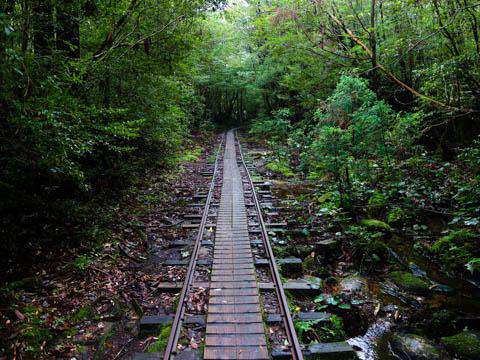How much does it cost to travel to Yakushima?
You should plan to spend around $111 (¥17,799) per day on your vacation in Yakushima. This is the average daily price based on the expenses of other visitors.
Past travelers have spent, on average for one day:
- $26 (¥4,255) on meals
- $47 (¥7,517) on local transportation
- $112 (¥18,015) on hotels
A one week trip to Yakushima for two people costs, on average, $1,550 (¥249,192). This includes accommodation, food, local transportation, and sightseeing.
All of these average travel prices have been collected from other travelers to help you plan your own travel budget.
Independent Travel
Traveling Independently to Yakushima has many benefits including affordabilty, freedom, flexibility, and the opportunity to control your own experiences.
All of the travel costs below are based on the experiences of other independent travelers.
Is Yakushima expensive to visit?
Prices in Yakushima are reasonable and comparable to your average travel destination. Hotels, food, and sightseeing are generally within normal price ranges.
Within Asia, Yakushima is a somewhat more expensive destination compared to other places. It is in the top 25% of cities in Asia for its travel costs. While some cities in the region are more expensive, Yakushima is generally more expensive than most.
For more details, and to find out if it's within your travel budget, see Is Yakushima Expensive?
How much money do I need for a trip to Yakushima?
The average Yakushima trip cost is broken down by category here for independent travelers. All of these Yakushima travel prices are calculated from the budgets of real travelers.
|
Category
|
Cost
|
|
Accommodation 1
(Double Occupancy)
|
¥18,015
($112)
|
|
Local Transportation 1
|
¥7,517
($47)
|
|
Food 2
|
¥4,255
($26)
|
|
Entertainment 1
|
¥3,116
($19)
|
|
Alcohol 2
|
¥489 -
1,466
($3 - 9)
|
Accommodation Budget in Yakushima
Calculated from travelers like you
The average price paid for one person for accommodation in Yakushima is $56 (¥9,007). For two people sharing a typical double-occupancy hotel room, the average price paid for a hotel room in Yakushima is $112 (¥18,015). This cost is from the reported spending of actual travelers.
Looking for a hotel in Yakushima? Prices vary by location, date, season, and the level of luxury. See below for options.
Transportation Budget in Yakushima
Calculated from travelers like you
-
The cost of a taxi ride in Yakushima is significantly more than public transportation. On average, past travelers have spent $47 (¥7,517) per person, per day, on local transportation in Yakushima.
-
Transportation1
Taxis, local buses, subway, etc.
$47
¥7,517
How much does it cost to go to Yakushima? Naturally, it depends on the dates. We recommend Kayak because they can find the best deals across all airlines.
The price of renting a car in Yakushima will depends on dates, the type of car, the location, and your age. We recommend Kayak because they can find the best deals across all car rental companies.
Food Budget in Yakushima
Calculated from travelers like you
-
While meal prices in Yakushima can vary, the average cost of food in Yakushima is $26 (¥4,255) per day. Based on the spending habits of previous travelers, when dining out an average meal in Yakushima should cost around $11 (¥1,702) per person. Breakfast prices are usually a little cheaper than lunch or dinner. The price of food in sit-down restaurants in Yakushima is often higher than fast food prices or street food prices.
-
Food2
Meals for one day
$26
¥4,255
Entertainment Budget in Yakushima
Calculated from travelers like you
-
Entertainment and activities in Yakushima typically cost an average of $19 (¥3,116) per person, per day based on the spending of previous travelers. This includes fees paid for admission tickets to museums and attractions, day tours, and other sightseeing expenses.
-
Entertainment1
Entrance tickets, shows, etc.
$19
¥3,116
Alcohol Budget in Yakushima
Calculated from travelers like you
-
The average person spends about $6.08 (¥977) on alcoholic beverages in Yakushima per day. The more you spend on alcohol, the more fun you might be having despite your higher budget.
-
Alcohol2
Drinks for one day
$6.08
¥977
Yakushima on a Budget
 Yakkushima, Japan
Yakkushima, Japan
Yakushima, Japan is a UNESCO World Heritage island located north of Okinawa and off the south east of of Kyushu. The island is well-known to Japanese tourists but not so much to international ones, making it a bit of a hidden gem to international tourists. This also means that English isn't spoken as much as in larger cities, so make sure to brush up on your Japanese and bring a dictionary.
Yakushima's terrain is very mountainous and tends to attract a lot of rain; so much so that over half of the year sees measurable rain pour making it one of the rainiest areas in Japan. The rainy season runs from June to mid-July, and a month later, typhoon season begins lasting until early October. Don't let this scare you off though, the Island is not always covered in rain and sees many days of sunshine, especially in August which is considered tourist season. If you prefer a better chance at staying dry, October and November are great times to visit while still being warm enough to hike the mountains.
Sights
The Island itself is a sight to behold, especially with the ancient cedar trees and huge forests. Before you head out for a hike though, check out the Yakusugi Museum which has photos and hands-on exhibits that explain the Island's natural beauty and history of the logging industry. The museum even has a section of a 1,660-year-old yakusugi cedar tree that you can touch!
There are two gardens to explore on the Island as well: Yakushima Fruit Garden and the Shitogo Gajumaru-en Banyan Garden. The Yakushima Fruit Garden is, as you could have guessed, a garden filled with fruit trees and plants. Seasonal fruit here includes papayas, mango, guava, and star fruit, all of which are available to eat or drink. The Shitogo Garden is home to 300-year-old Banyn trees and sub-tropical plants placed in a park setting, making for a great picnic spot.
Neighborhoods
Seeing as the population is fairly small, around 14,000 people, the Island does not have many large towns. There are two main port cities on the island, Miyanoura and Anbo, where you'll find many restaurants, accommodations, and car rentals. The city of Yakushima on the north east side of the island is another popular destination with restaurants and accommodations. Yakushima is also home to the tourist office on the island, called Yakushima English Services, or YES.
Activities
Yakushima is famous for their terrain that has been almost entirely untouched by mankind, creating a woodland wonderland enclosing the walking trails. The forests even acted as inspiration for animator Hayao Miyazaki's epic Princess Mononoke. Most people take advantage of this beauty by taking long hikes throughout the mountains. There are a variety of hiking trails ranging in difficulty, the top three are: Jamon sugi, Shirantani Unsuikyo, and the trails of Yakusugiland. Jamon sugi is by far the most difficult and most famous, primarily for being home to the oldest tree on the island. The Shiratani forest and Yakusugiland trails are fairly easy and far more picturesque than their more famous counterpart.
Aside from hiking, there are a few white sand beaches on the Island, it is recommended that you only swim where life guards are present. If you choose otherwise, swim with caution as currents can be quite strong in some areas. There are also some good scuba diving spots, especially off Nagata-no-hama beach which has a small reef system. You can also canoe down the huge rivers that run through the Island.
Food and Dining
The specialties on Yakushima are flying fish and tankan and ponkan oranges. You'll also find plenty of fresh seafood options, ranging from sushi to rice bowls. A popular spot for locals is Kamogawa restaurant which offers an English menu that includes a great fish dinner. The area is also known for their shochu production, especially the Mitake brand which is offered in 25% and 32% options.
Transportation
In Japan, trains are one of the fastest and lowest cost means of transportation. Getting a
Japan Rail Pass can save you money if you plan to stay for several days or more. Regional and nation-wide passes are available, usually for the number of days of your choice.
Plane or ferry are the best ways to get onto the island. Due to the small population, the bus options here are few and far between. Your best option is to rent a car or scooter, though international licenses are required to rent anything with a motor. Having a car with be extremely helpful when trying to navigate through the Island and can take you to some destinations that would otherwise be difficult to reach on foot.
Related:
Looking for a
hostel in Japan? In search of a
party in Tokyo? Traveling alone to
Osaka or
Tokyo?
We've been gathering travel costs from tens of thousands of actual travelers since 2010, and we use the data to calculate average daily travel costs for destinations around the world. We also systematically analyze the prices of hotels, hostels, and tours from travel providers such as Kayak, HostelWorld, TourRadar, Viator, and others. This combination of expenses from actual travelers, combined with pricing data from major travel companies, gives us a uniqe insight into the overall cost of travel for thousands of cities in countries around the world. You can see more here: How it Works.
 Yakkushima, Japan
Yakkushima, Japan

 Budget Your Trip is all about finding out how much everything costs so that you can travel cheaper and longer. Created by avid travelers Laurie and Bryan, our goal is to help you plan your next trip on the right budget. With average daily travel costs that are calculated from the budgets of real travelers, plus an analysis of hotel and tour prices, you can find out how much money you need to plan your next adventure. We also have plenty of travel advice, accommodation reviews, and activity suggestions.
Budget Your Trip is all about finding out how much everything costs so that you can travel cheaper and longer. Created by avid travelers Laurie and Bryan, our goal is to help you plan your next trip on the right budget. With average daily travel costs that are calculated from the budgets of real travelers, plus an analysis of hotel and tour prices, you can find out how much money you need to plan your next adventure. We also have plenty of travel advice, accommodation reviews, and activity suggestions.